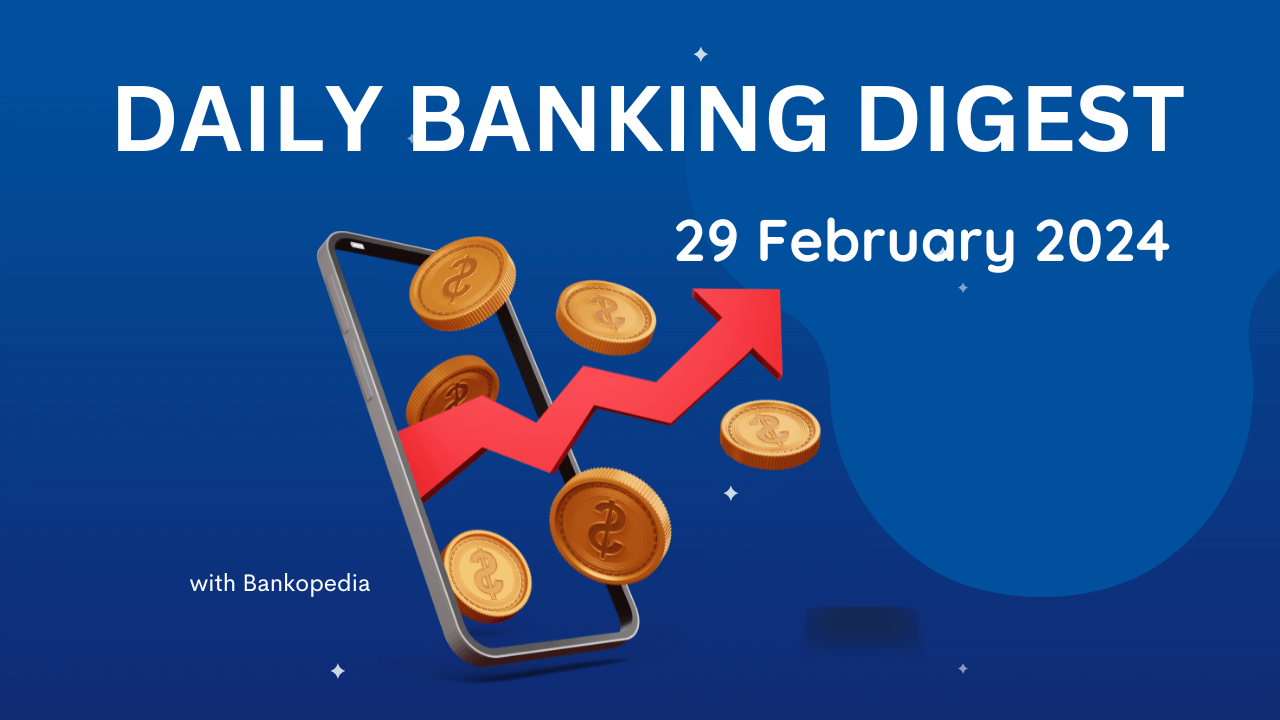Welcome to Daily Banking Digest, your premier source for the latest news and insights on May 01, 2024, focusing on banking, the economy, and finance. Our platform offers a comprehensive overview of the day’s most critical financial stories, market trends, and economic developments. Whether you’re a professional in the financial sector, an investor monitoring market movement, or someone interested in staying informed about the economic landscape, Daily Banking Digest provides reliable, up-to-date information.
Join our Telegram Channel for Daily PDF in your Inbox – Click Here
Table of Contents
Tax Incentives Proposed by ICAI to Foster Skill Development and Environmental Sustainability
The Institute of Chartered Accountants of India (ICAI) has submitted a pre-budget memorandum to the government, proposing various tax incentives to promote skill development, green projects, and social welfare. The memorandum also includes suggestions for simplifying tax laws, reducing litigation, and enhancing tax collection mechanisms.

Key Points:
Tax Incentives for Skill Development:
- Extend tax incentives to entities exclusively engaged in skill development programs.
Tax Incentives for Green Projects:
- Provide tax incentives to entities engaged in green projects that positively impact the environment.
- Exempt or provide a concessional tax rate on interest income earned by subscribers of green bonds.
Education of Girl Child:
- Introduce a separate deduction for expenses related to the education of girl children.
Personal Taxation:
- Provide a deduction for Mediclaim premiums paid under the default tax regime.
- Regularly enhance the standard deduction.
- Allow joint taxation for married couples.
Business Taxation:
- Align tax audit provisions with presumptive income provisions.
- Simplify the presumptive income regime.
- Increase the threshold for computing allowable remuneration of partners.
- Rationalize provisions relating to taxation of charitable trusts.
Return Filing:
- Allow filing of updated returns in case of reduction in losses.
- Permit filing of updated returns even after assessment proceedings are completed.
Other:
- Rationalize direct tax laws.
- Minimize litigation.
- Enhance tax collection mechanisms.
Morgan Stanley Launches Fund Management Operations in GIFT City
Morgan Stanley has launched its fund management operations in India at GIFT IFSC in Gujarat. This move aims to capitalize on the long-term investment opportunities in India and aligns with the firm’s growth strategy in the country. The GIFT IFSC offers foreign investors ease of access and a simplified regulatory framework, making it an attractive destination for fund flows.

Key Points:
- Inauguration of Morgan Stanley IFSC Fund: Morgan Stanley has established its fund management operations at GIFT IFSC in Gujarat.
- Investment Opportunities in India: The firm aims to participate in the multi-decade investment opportunities that India presents.
- Growth Strategy in India: The GIFT IFSC operations are a key enabler for Morgan Stanley’s growth strategy in the country.
- Attractive Destination for Foreign Investors: GIFT IFSC offers ease of access and a simplified regulatory regime, making it an appealing destination for fund flows from foreign investors.
HSBC Advocates for “Structural Reforms” to Propel India’s Growth to 7.5%
HSBC Holdings Plc predicts that India’s economic growth will require significant reforms, including overhauling land and labor laws, to exceed 7.5% over the next decade. Moderate reforms could yield 6.5% growth, while more challenging reforms are necessary for higher growth. Prime Minister Modi’s goal of making India a developed nation by 2047 requires annual economic expansion of over 8%.
Key Points:
Reforms for Growth: – India needs difficult reforms to achieve growth above 7.5%. – Moderate reforms can lead to 6.5% growth.
Types of Reforms: – Hard reforms: Controversial, require political capital, address bottlenecks. – Easy reforms: Infrastructure investment, fiscal deficit reduction, futuristic sector support.
Growth Projections: – Easy reforms: 6.5% growth over 10 years. – Hard reforms: Potential for higher growth.
Government’s Focus: – HSBC predicts the government’s reform focus will become clear in the first year.
IMF Raises Asia’s Economic Growth Outlook for 2024, Citing China and India’s Contributions
The International Monetary Fund (IMF) has raised its growth forecast for Asia in 2024, citing improved prospects for China and India. The region is expected to expand by 4.5%, driven by government stimulus and a softening global economy. However, risks remain, including a prolonged property downturn in China and geopolitical tensions.
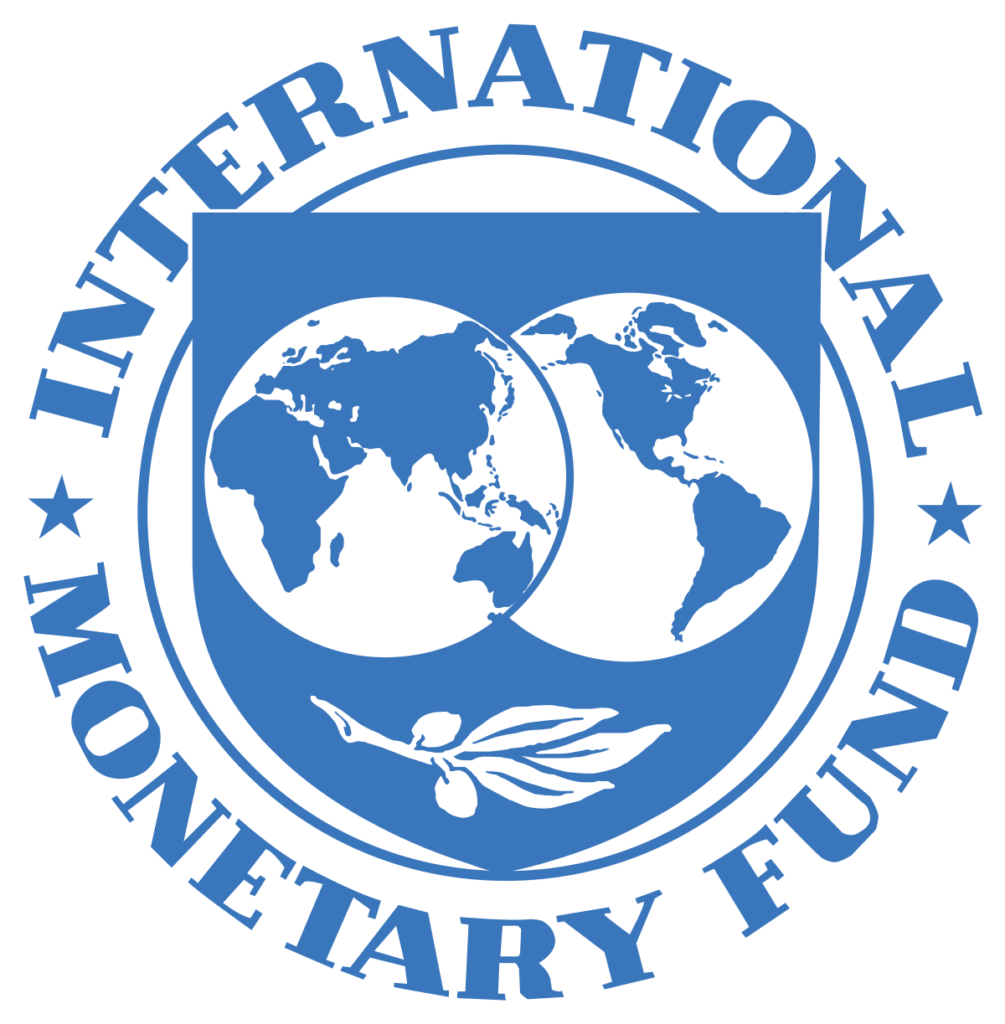
Key Points:
Growth Forecast: – Asia’s growth forecast for 2024 is 4.5%, up from 4.2% in October.
China’s Outlook: – China’s growth is projected at 4.6% in 2024, supported by government stimulus and strong exports. – The IMF may further revise its China outlook upward.
India’s Outlook: – India’s growth is expected to reach 6.8% in 2024, driven by increased capital spending.
Risks: – A prolonged property downturn in China could weaken demand and prolong deflation. – Growing fiscal deficits and US-China tensions pose challenges.
Monetary Policy: – Asian nations should avoid relying too heavily on the Federal Reserve’s path when setting their own monetary policy. – Following the Fed could limit exchange rate volatility but risks destabilizing inflation expectations.
Central Bank of India’s Standalone Net Profit Surges 41% to ₹807 Crore in Q4 FY24
Central Bank of India (CBoI) reported a 41% increase in its fourth-quarter standalone net profit, driven by a decline in provisions for non-performing assets (NPAs) and standard assets. The bank’s net interest income remained stable, while other income declined slightly. Despite a decrease in net interest margin, CBoI’s GNPA and net NPA positions improved marginally. The bank’s gross advances and total deposits increased, and its Board of Directors approved a capital raise of up to ₹5,000 crore for FY25.
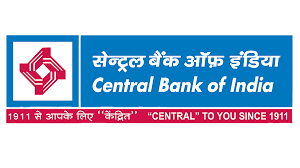
Key Points:
Financial Performance:
- Net profit increased by 41% to ₹807 crore.
- Net interest income edged up by 0.80% to ₹3,541 crore.
- Other income declined by 4% to ₹1,362 crore.
- Net interest margin decreased to 3.58% from 4.01%.
Asset Quality:
- Provisions for NPAs decreased by 35% to ₹509 crore.
- Provisions for standard assets declined by 50% to ₹188 crore.
- GNPA position remained unchanged at 4.50%.
- Net NPA position improved to 1.23% from 1.27%.
Advances and Deposits:
- Gross advances increased by 15.60% to ₹2,51,745 crore.
- Total deposits rose by 7.16% to ₹3,85,011 crore.
- CASA deposits constituted 50.02% of total deposits.
Capital Raise:
- Board of Directors approved a capital raise of up to ₹5,000 crore for FY25.
- Capital raise will be through various modes, including FPO, rights issue, QIP, and AT1/Tier II bonds.
Indian Banks Achieve 16.3% Surge in Credit Disbursement for Fiscal Year 2024
Scheduled commercial banks (SCBs) in India experienced a higher non-food bank credit growth of 16.3% in FY24, driven by demand from agriculture, industry, and services sectors. However, personal loan growth moderated due to RBI’s increased risk weights on consumer credit exposure.
Key Points:
Non-Food Bank Credit Growth: – SCBs achieved a non-food bank credit growth of 16.3% in FY24, excluding the HDFC-HDFC Bank merger.
Sectoral Credit Growth: – Agriculture and allied activities saw robust credit growth of 20.1%. – Industry credit grew by 8.5%, with strong growth in chemicals, food processing, and infrastructure. – Services sector credit improved to 20.2%, driven by transport operators and commercial real estate.
Personal Loan Growth: – Personal loan growth moderated to 17.7% due to RBI’s increased risk weights on consumer credit exposure.
Other Credit Growth: – Credit to NBFCs and trade decelerated in March 2024 compared to March 2023.
UCO Bank Targets Gross NPA Reduction to Below ₹6,000 Crore by End of Fiscal Year
UCO Bank aims to reduce its gross non-performing assets (NPA) to below ₹6,000 crore by the end of the current fiscal, down from ₹6,463.30 crore at the end of the previous fiscal. The bank’s gross NPA ratio also decreased in the fourth quarter of the last fiscal. Despite a decline in operating profit, the bank plans to invest in IT infrastructure and reduce the government’s stake to comply with SEBI regulations.
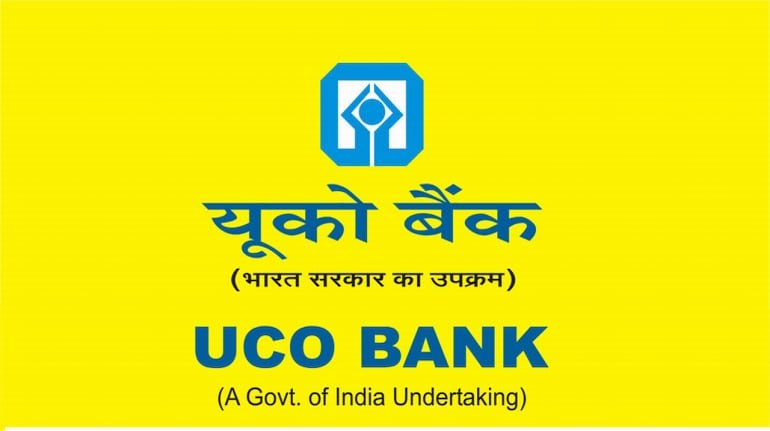
Key Points:
Gross NPA Reduction: – UCO Bank aims to reduce gross NPA to below ₹6,000 crore by the end of the current fiscal. – Gross NPA fell 16.35% year-on-year in the fourth quarter of the last fiscal. – Gross NPA ratio decreased 132 basis points year-on-year to 3.46% in Q4FY24.
Operating Profit Decline: – UCO Bank’s net profit fell 9.5% year-on-year in Q4FY24 due to higher provisioning for pension and gratuity. – Operating profit declined from ₹1,357.05 crore in Q4FY23 to ₹1,272.87 crore in Q4FY24.
IT Infrastructure Investment: – The bank plans to invest around ₹1,000 crore in IT infrastructure and modernization. – It spent around ₹700 crore on IT infrastructure in the last financial year.
Government Stake Reduction: – UCO Bank aims to reduce the government’s stake to 75% from the current 95.39% to comply with SEBI regulations. – The bank has approved a capital raising plan of around 400 crore shares.
RBI Expands Operational Risk Management Guidance to Include Non-Banking Financial Companies (NBFCs)
The Reserve Bank of India (RBI) has updated its guidance note on operational risk management for the financial sector, extending its applicability to NBFCs, housing finance companies, co-operative banks, and financial institutions. The updated note aligns with the Basel Committee on Banking Supervision (BCBS) Principles and aims to enhance the effectiveness of operational risk management and operational resilience within the financial system.
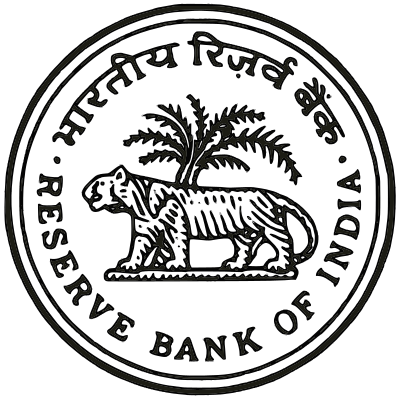
Key Points:
Applicability: – Extended to all NBFCs, housing finance companies, co-operative banks, and financial institutions, in addition to commercial banks.
Three Lines of Defense Model: – Business unit: First line of defense – Organizational operational risk management function: Second line of defense – Audit function: Third line of defense
Principles: – Mapping of internal and external interconnections and interdependencies – Incident management – ICT – Disclosures
New Principles: – Lessons learned exercise – Continuous feedback mechanism
Operational Risks: – Vulnerabilities related to increasing dependence on technology – Reliance on third-party providers – Virtual working arrangements.
ICICI Prudential Faces GST and Penalty Order of Rs 835 Crore
ICICI Prudential Life Insurance has been issued a GST and penalty order of Rs 835 crore by Maharashtra’s State Tax department for violations related to input tax credit reversal, ITC mismatch, non-payment of tax on fixed asset sales, and interest on GST payment on proposal deposits. The GST amount is Rs 380 crore, while the penalty and interest amount to Rs 416 crore and Rs 38 crore, respectively.
Key Points:
- GST Violation: Reversal of input tax credit as per GST Law
- ITC Mismatch: Discrepancies in ITC claimed in GSTR -3B, GSTR-9, and GSTR 2A
- Non-Payment of Tax: Failure to pay tax on sale of fixed assets
- Interest on GST Payment: Non-payment of interest on GST payment on proposal deposit
- GST Amount: Rs 380 crore
- Penalty: Rs 416 crore
- Interest: Rs 38 crore
RBI’s Guidance on Operational Risk Management and Resilience
The Reserve Bank of India (RBI) has issued guidelines for regulated entities (REs) in India to implement robust ICT risk management programs. REs must assess risks and perform due diligence before partnering with third parties, ensuring they have equivalent operational resilience. They should develop response and recovery plans to manage disruptions and continuously improve these plans based on lessons learned.
Key Points:
- ICT Risk Management Program: REs must implement a robust ICT risk management program aligned with their operational risk management framework.
- Third-Party Dependencies: REs must manage dependencies on third parties and ensure they have equivalent operational resilience.
- Risk Assessment and Due Diligence: REs must perform risk assessments and due diligence before entering into arrangements with third parties.
- Response and Recovery Plans: REs must develop and implement response and recovery plans to manage disruptions.
- Continuous Improvement: REs must continuously improve their incident response and recovery plans based on lessons learned.
SBI Official Predicts Positive Real Yields on Indian Government Bonds
Indian government bonds are expected to provide a real return of 2%, making them attractive investment opportunities. The CIO of SBI Mutual Fund recommends focusing on real yields rather than capital gains. Inflation-adjusted returns are expected even if inflation stabilizes around 5%. The government’s fiscal deficit reduction efforts and the potential for rate easing by the central bank are seen as positive factors.

Key Points:
- Real Return: Indian government bonds offer a real return of 2%.
- Focus on Real Yields: Real yields should be the primary consideration, not capital gains.
- Inflation-Adjusted Returns: Returns will accrue even if inflation stabilizes around 5%.
- Government’s Fiscal Deficit: Government efforts to reduce the fiscal deficit are supportive.
- Rate Easing Cycle: The potential for rate easing by the central bank is seen as positive.
- Attractive Entry Point: Current levels are seen as an attractive entry point for government bonds.
- 10-Year Benchmark Yield: The 10-year benchmark yield is expected to remain in the 7.00%-7.30% range.
- No Rate Cuts Expected: No rate cuts are expected in the current financial year.
- Longer Duration Bonds: Longer duration bonds offer higher potential for capital gains.
- Compelling Investment: Government bonds are seen as a compelling investment opportunity.
RBI’s Gold Acquisition in Q1 2023: Drivers and Implications
The Reserve Bank of India (RBI) has significantly increased its gold purchases, acquiring 19 tonnes in the first quarter of 2024, surpassing its 2023 total of 16 tonnes. This surge in central bank gold buying, led by emerging markets, has contributed to a strong start to the year for gold demand.

Key Points:
RBI’s Gold Purchases: – RBI bought 19 tonnes of gold in Q1-CY24, dwarfing its 2023 total of 16 tonnes. – Central banks’ gold purchases have exceeded 1,000 tonnes per year in 2022 and 2023.
Reasons for Central Bank Gold Buying: – Diversification of forex assets due to geopolitical tensions and US sanctions on Russia. – Gold’s appeal as an asset that appreciates in value over time.
Global Central Bank Gold Buying: – Ten central banks increased their gold reserves in Q1-CY24, all from emerging markets. – Central bank net demand totaled 290 tonnes in Q1-CY24, the strongest start to any year on record. – China, Turkey, and India led the way in gold purchases.
China’s Gold Reserves: – People’s Bank of China (PBOC) added 27 tonnes to its gold reserves in Q1-CY24. – This marks the 17th consecutive monthly increase, bringing its total gold holdings to 2,262 tonnes.
Outlook for Gold Prices: – Geopolitical tensions and continued central bank buying could support gold prices going forward. – Investors are encouraged to hold gold as an effective hedge against potential economic challenges.
Gujarat High Court Clarifies GST Rate on Mango Pulp as 12% from July 2017
The Gujarat High Court has ruled that mango pulp has been subject to a 12% Goods and Services Tax (GST) since the implementation of GST in July 2017. The court rejected arguments that the 12% tax only became effective in July 2022 when a government notification clarified the matter.
Key Points:
- GST Rate for Mango Pulp: Mango pulp is subject to a 12% GST.
- Effective Date of 12% GST: The 12% GST rate has been in effect since July 1, 2017, when GST was introduced.
- Clarificatory Nature of Notification: The government notification issued in July 2022 was clarificatory in nature, confirming the existing 12% GST rate.
- Fresh Mangoes Exempt: Fresh mangoes are exempt from GST.
- Taxation of Derived Products: Mango pulp and other derived mango products have consistently been taxed at 12%.
India’s Economic Growth Projected at 7% for FY24 Despite Global Uncertainties: NCAER
The Indian economy is projected to grow over 7% in the current fiscal year, according to the National Council of Applied Economic Research (NCAER). This growth is attributed to a favorable global outlook, expected above-normal monsoon, and resilient domestic economic indicators.
Key Points:
Global Outlook and Monsoon: – Projected acceleration in global growth and trade volumes. – Forecast of an above-normal monsoon.
Domestic Economic Indicators: – Purchasing Managers’ Index (PMI) for manufacturing at a 16-year high. – UPI digital payments system reaching the highest volume since its inception. – GST collections at Rs 1.8 lakh crore in March, the second best since its rollout. – CPI headline inflation down to 4.9% in March. – Core inflation down to 3.2% in March.
Employment Indicators: – Increase in net new subscribers under EPFO. – Moderation in online hiring activities.
Growth Projections: – NCAER: 7% growth. – ADB and Fitch Ratings: 7% growth. – IMF, S&P Global Ratings, and Morgan Stanley: 6.8% growth.
Monetary Policy: – Monetary Policy Committee (MPC) kept policy rate unchanged at 6.5%. – RBI maintained GDP growth projection at 7% and CPI inflation projection at 4.5%.
India’s Oil Import Costs Projected to Reach $101-104 Billion in Fiscal Year 2025: ICRA
India’s net oil import bill is projected to increase to USD 101-104 billion in the current fiscal year, driven by higher oil prices and potential escalation in the Iran-Israel conflict. Despite savings from discounted Russian oil imports, India’s oil import dependency remains high, making it vulnerable to price fluctuations.

Key Points:
Net Oil Import Bill: – Projected to widen to USD 101-104 billion in FY2025 from USD 96.1 billion in FY2024. – Escalation in Iran-Israel conflict could further increase import value.
Savings from Russian Oil Imports: – Lower value of Russian oil imports has led to savings of USD 7.9 billion in 11 months of FY2023-24. – Savings from Russian oil imports have compressed India’s CAD/GDP ratio by 1522 basis points in FY2023-24.
Impact of Crude Oil Price: – A USD 10/barrel increase in average crude oil price could increase net oil imports by USD 12-13 billion and widen CAD by 0.3% of GDP. – If average crude oil price rises to USD 95/barrel in FY2025, CAD could widen to 1.5% of GDP.
India’s Oil Import Dependency: – India is over 85% dependent on imports for its crude oil needs. – Share of crude petroleum imported from Russia increased to 36% in April-February FY2024 from 2% in FY2022.
Middle East Conflict: – Conflict in the Middle East poses a threat to crude oil import routes. – Iran-Israel conflict could lead to higher crude oil prices and impact India’s oil imports.
Core Sector Growth in India Declines to 5.2% in March
The growth rate of India’s core sector industries slowed to 5.2% in March 2024, down from 7.1% in February. This decline was primarily driven by a sequential deterioration in five of the eight constituent sectors, including coal, crude oil, natural gas, steel, and refinery products. However, cement and electricity output accelerated during the month. Overall, the core sector grew by 7.5% in FY24, with steel, coal, cement, and electricity leading the growth.
Key Points:
Growth Rate: – Core sector growth slowed to 5.2% in March 2024 from 7.1% in February.
Sectoral Performance: – Coal, crude oil, natural gas, steel, and refinery products output decelerated in March. – Cement and electricity output accelerated during the month.
Annual Growth: – Core sector growth stood at 7.5% in FY24, compared to 7.8% in FY23.
Impact on IIP: – The eight core industries account for 40.27% of the weighting in the Index of Industrial Production (IIP).
Expert Analysis: – Coal and cement are the “star” performers due to growth in industrial activity and government infrastructure push. – Steel growth was driven by infrastructure, while fertilizer production declined due to the non-sowing season. – Electricity generation expanded in March and April, boosted by rising heat demand. – IIP growth is expected to moderate in March due to the fading leap year effect.
March Infrastructure Output Increases by 5.2%, Cement Production Surges 10.6%
India’s infrastructure output in March increased by 5.2% year-on-year, compared to a 7.1% growth in February. The growth was driven by sectors like cement production, coal production, and electricity generation. However, two core sectors, fertiliser production, and refinery products, saw a decline in output.
Key Points: 1. Infrastructure Output Growth: – Infrastructure output in March rose by 5.2% year-on-year, compared to a 7.1% growth in February. 2. Sector-wise Performance: – Cement production saw the highest growth at 10.6% in March, followed by coal production at 8.7% and electricity generation at 8%. 3. Core Sectors Performance: – Fertiliser production registered a smaller decline of 1.3% in March, while refinery products dropped by 0.3%. 4. Previous Month Comparison: – In February, coal production rose by 11.6% and electricity generation grew by 7.5%. 5. Overall Outlook: – The infrastructure output growth indicates a positive trend in the industrial production sector in India.
India’s Economic Growth Driven by Robust Capital Expenditure and Domestic Consumption: IMF
The International Monetary Fund (IMF) has recognized India as the world’s fastest-growing major economy, driven by strong public investment and resilient domestic demand. The IMF has upgraded its growth projections for the Asia-Pacific region, primarily due to higher growth expectations in India and China.

Key Points:
Growth Projections: – IMF raised India’s GDP growth projection for 2024-25 to 6.8%. – For FY24, IMF raised India’s GDP growth projection to 7.8%. – IMF expects India’s economic growth to slow down slightly to 6.5% in FY26.
Drivers of Growth: – Strong public investment remains an important driver of India’s growth. – Resilient domestic demand has supported India’s economic expansion.
China’s Impact: – IMF raised China’s GDP growth projection for 2023 to 5.2%. – IMF expects China’s GDP growth to slow to 4.6% in 2024 and 4.1% in 2025. – Weaker activity in China could trigger spillovers to the Asia-Pacific region, affecting exporters.
Inflation: – Several economies may experience further reductions in inflation due to lower energy prices. – In India, food price pressures, especially for rice, may slow headline disinflation.
Lucknow, Ghaziabad, and Noida: Emerging as Financial Hubs
The Uttar Pradesh government aims to establish Lucknow, Ghaziabad, and Noida as “financial cities” to attract investments in South Asia. The state will collaborate with private companies to develop specialized townships, including financial cities, medi-cities, edu-cities, and film cities. The government plans to develop over 100 new townships to reduce congestion and promote planned urbanization.
Key Points:
Financial Cities: – Lucknow, Ghaziabad, and Noida will be developed as financial cities.
Medi-Cities: – Medi-cities are planned in Gorakhpur, Agra, Lucknow, Kanpur, Bareilly, and Chitrakoot districts.
Film Cities: – Film cities are proposed in Gorakhpur, Ghaziabad, and Lucknow.
Investment Potential: – The total investment potential in the UP real estate and housing sector is estimated at $25-$30 billion.
Township Development: – The government aims to develop over 100 new townships to decongest cities and facilitate planned urbanization.
Satellite and Twin Cities: – Satellite and twin cities are planned near major cities, including Lucknow, Ayodhya, Agra, Noida, Bareilly, Gorakhpur, Jhansi Mathura, Meerut, Moradabad, Prayagraj, and Kanpur.
Industrial Townships: – Industrial townships are proposed in Gautam Buddha Nagar, Ghaziabad, Agra, Hapur, Lucknow, Kanpur, Unnao, Hardoi, Gorakhpur, and Chitrakoot districts.
State Capital Region (SCR): – The state has drafted a blueprint for an SCR on the lines of Delhi-NCR, covering eight districts.
Fintech Park in Noida: – YEIDA has invited bids for a feasibility study and DPR for a 100-acre fintech park in Noida Sector 13.
Fintech Startups in Noida-Greater Noida: – Currently, there are about 240 fintech startups in the region in various sectors.
Fino Payments Bank Reports 14% Surge in Net Profit to Rs 25.21 Crore in Q4
Fino Payments Bank reported a 14.2% YoY increase in net profit to Rs 25.21 crore in Q4 FY24, driven by a surge in revenue and annuity income from CASA and cash management. The company’s expenses also rose, but it remains optimistic about its growth prospects and has applied for an SFB license.

Key Points:
Net Profit: – Net profit increased by 14.2% YoY to Rs 25.21 crore in Q4 FY24. – Net profit rose by 10% sequentially from Rs 22.80 crore in Q3 FY24.
Revenue: – Revenue surged by 24% YoY to Rs 401.3 crore in Q4 FY24. – Revenue increased by 8.4% sequentially from Rs 370.2 crore in Q3 FY24.
Expenses: – Expenses rose by 24.8% YoY to Rs 376.01 crore in Q4 FY24. – Expenses increased by 8.2% sequentially from Rs 347.4 crore.
Growth Drivers: – Annuity income from CASA grew by 75% YoY. – Transaction value in cash management increased by 42% YoY.
TAM Model: – The company follows a TAM model involving transaction, acquisition, and monetization of customers.
SFB License: – Fino Payments Bank has applied for an SFB license. – An SFB license would allow the company to offer lending services.
SEBI Directs NSE to Scrutinize Linde India’s Related-Party Dealings
Sebi has ordered the National Stock Exchange (NSE) to appoint a valuer to assess the valuation of related party transactions between Linde India and Praxair India. This action follows complaints from shareholders alleging that Linde India failed to obtain shareholder approval for material related party transactions.

Key Points:
Investigation by Sebi: – Sebi investigated complaints alleging that Linde India entered into material related party transactions with Praxair India without shareholder approval.
Interim Order by Sebi: – Sebi noted that Linde India executed related party transactions without shareholder approval, depriving public shareholders of input. – NSE was directed to appoint a registered valuer to assess the valuation of business foregone and received in the joint venture agreement between Linde India and Praxair India.
Valuation Report: – The valuation report must be submitted to Sebi and Linde India within two weeks. – Linde India is required to present the report to its audit committee and board of directors.
Materiality Assessment: – Linde India must assess the materiality of future related party transactions based on the total value of transactions with any related party in a financial year. – Shareholder approvals are required if the total value of related party transactions exceeds the materiality threshold.
Background: – Linde India was formerly known as BOC India and was acquired by Linde AG in 2006. – In 2018, Linde AG merged with Praxair Inc., resulting in the formation of Linde Plc. – Linde Plc has two subsidiaries in India: Linde India and Praxair India. – Linde India and Praxair India entered into a joint venture agreement to establish Linde South Asia Services.
Uco Bank Targets 75% Government Stake Reduction in Current Fiscal Year
UCO Bank aims to reduce the government’s stake from 95.39% to 75% by fiscal 2024-25 to comply with SEBI’s minimum public shareholding norms. The bank plans to issue 400 crore equity shares in tranches and explore various options for issuance. UCO Bank targets a credit growth of 12-14%, aims to maintain a CD ratio of 75%, and retain a net interest margin of 2.9-3%. The bank plans to expand its branch network, invest in IT infrastructure, and modernize its treasury operations.

Key Points:
- Government Stake Reduction: UCO Bank aims to reduce government stake to 75% by fiscal 2024-25.
- Equity Issuance: The bank plans to issue 400 crore equity shares for stake reduction.
- Credit Growth: UCO Bank targets a credit growth of 12-14%, with robust corporate lending growth.
- Deposit Mobilization: The bank aims to maintain a CD ratio of 75%.
- Net Interest Margin: UCO Bank targets a net interest margin of 2.9-3%.
- Branch Expansion: The bank plans to open 130 branches this fiscal year.
- IT Investment: UCO Bank will invest Rs 1,000 crore in IT infrastructure.
- Treasury Modernization: The bank will modernize its treasury operations.
- IMPS Glitch Recovery: UCO Bank has recovered 79% of the loss due to an IMPS debit glitch.
- Standalone Net Profit: The bank reported a standalone net profit of Rs 525.77 crore for Q4 FY24, a 9.5% decrease year-over-year.
Geojit’s PAT Surges 48% to ₹149 Crore in FY24
Geojit Financial Services reported a 48% increase in its PAT for FY24, reaching ₹149 crore. The company’s consolidated revenue grew by 39% to ₹624 crore, while EBITDA increased by 53% to ₹244 crore. Geojit has also recommended a final dividend of ₹1.50 per share and plans to invest $1 million in Dubai to expand its capital market business.
Key Points:
- Profit After Tax (PAT): Increased by 48% to ₹149 crore in FY24.
- Consolidated Revenue: Grew by 39% to ₹624 crore.
- EBITDA: Increased by 53% to ₹244 crore.
- Quarterly Revenue: Up by 79% to ₹209 crore.
- Quarterly Profit After Tax: Increased by 73% to ₹52 crore.
- Assets Under Custody and Management: Stood at ₹93,000 crore as of March 31.
- Dividend: Final dividend of ₹1.50 per share recommended.
- Investment: $1 million investment approved for Dubai International Financial Centre.
Public Sector Banks Urged to Expedite Resolution at Tribunals
The Indian government has instructed state-owned banks to minimize unnecessary adjournments in debt recovery tribunals (DRTs) to expedite the recovery process. The government has also established a panel to propose amendments to the SARFAESI and DRT Acts to enhance efficiency.
Key Points:
1. Avoidance of Unnecessary Adjournments: – Banks instructed to conduct monthly reviews to identify and avoid unnecessary adjournments. – Legal teams advised to monitor and reduce adjournments on minor issues.
2. Pending Cases: – As of January 2024, approximately 215,000 cases are pending before DRTs, including 162,000 original applications. – In FY23, around 58,000 cases involving ₹4.02 lakh crore were referred to DRTs.
3. Lack of Aggressive Approach: – Delays attributed to the lack of an aggressive approach from bank legal representatives. – Litigants pursuing legal remedies in higher courts also contribute to pendency.
4. Panel for Amendments: – Government has established a panel to suggest amendments to SARFAESI and DRT Acts. – Proposed amendments include legal sanctity for e-notices to debtors.
5. Performance Reviews: – Banks directed to conduct periodic reviews of empanelled advocates’ performance. – Rationalization of case assignments based on performance. – Banks required to ensure officer presence at all case hearings.
6. Absence of Lawyers: – Pendency sometimes caused by the absence of lawyers or requests for adjournments.
Interest Rates on Loans and Deposits Increase in All Segments for Fiscal Year 2024
In FY’2023-24, both lending and deposit rates increased, impacting banks’ interest margins. The weighted average lending rate (WALR) on fresh rupee loans rose by 13 basis points (bps) to 9.37% in March 2024, while the WALR on outstanding rupee loans increased by 13 bps to 9.85%. The 1-Year median Marginal Cost of Fund based Lending Rate (MCLR) rose to 8.85% in April 2024. Deposit rates also increased, with the weighted average domestic term deposit rate (WADTDR) on fresh rupee term deposits rising by 14 bps to 6.62% in March 2024. The WADTDR on outstanding rupee term deposits increased by 72 bps to 6.88%. Public sector banks (PSBs) experienced higher increases in deposit and lending rates compared to private banks.
Key Points:
- Lending Rates:
- WALR on fresh rupee loans increased by 13 bps to 9.37% in March 2024.
- WALR on outstanding rupee loans rose by 13 bps to 9.85% in March 2024.
- Deposit Rates:
- WADTDR on fresh rupee term deposits increased by 14 bps to 6.62% in March 2024.
- WADTDR on outstanding rupee term deposits rose by 72 bps to 6.88% in March 2024.
- Transmission Across Bank Groups:
- PSBs experienced higher increases in deposit and lending rates compared to private banks.
- MCLR:
- 1-Year median MCLR rose to 8.85% in April 2024.
Jana Small Finance Bank Considers Applying for Universal Bank License in FY24
Jana Small Finance Bank (Jana SFB) plans to apply for a universal bank license in FY26 after meeting the Reserve Bank of India’s (RBI) requirements for net non-performing assets (NPAs) of less than 1% for two consecutive years. The bank has already met the listing requirement and has a strong financial position, with a net worth of Rs 3,577 crore and a capital adequacy ratio of 20.3%.

Key Points:
1. Universal Bank License Application: – Jana SFB plans to apply for a universal bank license in FY26.
2. NPA Requirement: – The bank needs to maintain net NPAs below 1% for one more year to meet the RBI’s requirement.
3. Net NPA Target: – Jana SFB expects net NPAs to be around 0.5% by the end of FY25.
4. Listing Requirement: – The bank has already met the listing requirement for transition to a universal bank.
5. Net Worth and Capital Adequacy: – Jana SFB’s net worth is Rs 3,577 crore, exceeding the regulatory requirement of Rs 1,000 crore. – The bank’s capital adequacy ratio is 20.3%, higher than the 15% requirement for SFBs.
6. Loan Portfolio Diversification: – Jana SFB has diversified its loan portfolio, with secured assets accounting for 60% at the end of FY24.
7. Growth Targets: – The bank aims for a loan and deposit growth target of 20% each in FY25. – It expects a 30-40% growth in net profit during FY25.
Government Reduces Windfall Tax on Petroleum Crude to Rs 8,400 per Metric Tonne Effective May 1
India has reduced its windfall tax on petroleum crude to 8,400 Indian rupees ($100.66) per metric ton, effective May 1. The tax on diesel and aviation turbine fuel remains unchanged at zero.
Key Points:
- Windfall Tax Cut: India has reduced the windfall tax on petroleum crude to 8,400 rupees per metric ton from 9,600 rupees.
- Diesel and ATF Tax Unchanged: The windfall tax on diesel and aviation turbine fuel remains at zero.
- Previous Tax Increase: On April 16, the government had raised the windfall tax on petroleum crude to 9,600 rupees per metric ton from 6,800 rupees.











